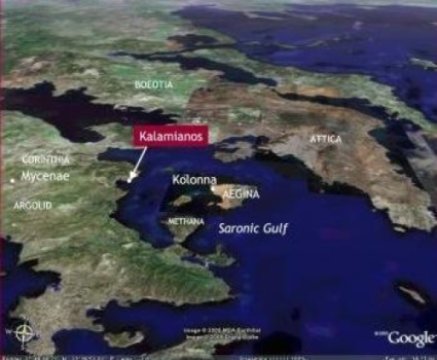Saronic Gulf
Atalanta
Atalanta was a relatively insignificant island that according to Thucydides (II, 32) was “lying off the coast of Opuntian Locris”. The Athenians built a fort there in 431 BC and following an earthquake it suffered an inundation that caused serious loss of life and destruction of property (III, ChapXI par.89). The island is known today as Talandonisi. In this same area, North West of Athens, we have still the town of Atalanti and the Bay of Atalanti.
 This report of the flooding of Atalanta is sometimes taken out of context by some supporters of Plato’s Atlantis and presented as a clear reference to it. This superficial interpretation does not stand up to scrutiny in terms of date, location, size, nor importance.
This report of the flooding of Atalanta is sometimes taken out of context by some supporters of Plato’s Atlantis and presented as a clear reference to it. This superficial interpretation does not stand up to scrutiny in terms of date, location, size, nor importance.
Others, such as Sprague de Camp, maintain that Plato’s Atlantis is pure fiction inspired by the destruction of Atalanta ‘in a single day’ by a flood following an earthquake. However, it would appear foolish to concoct a story such as that of Atlantis and base it on an inconsequential island, located only 50 miles from Athens, with a similar name, destroyed a few years previously and still expect it to be believed as true.
*Others claim that the sudden flooding of Tiryns (Zangger) or Helike prompted Plato to incorporate an inundation in the Atlantis story!*
A similar Mycenaean city with a sunken harbour, tentatively named Korphos-Kalamianos on the Saronic Gulf, 60 miles south-west of Athens, has recently been excavated.
In 2014, work began on the exploration of another sunken Bronze Age coastal village at Kilada Bay, also in the Argolic Gulf. The team of Swiss and Greek archaeologists returned to the site in 2015, revealing their discoveries in August of that year(a).
Acording to Apollodorus and John Lemprière, Atalanta was the name of the only female Argonaut!(b)
> (a) Bronze Age Greek city found underwater (archive.org)<
(b) https://en.wikipedia.org/wiki/Argonauts#The_crew_of_the_Argo
